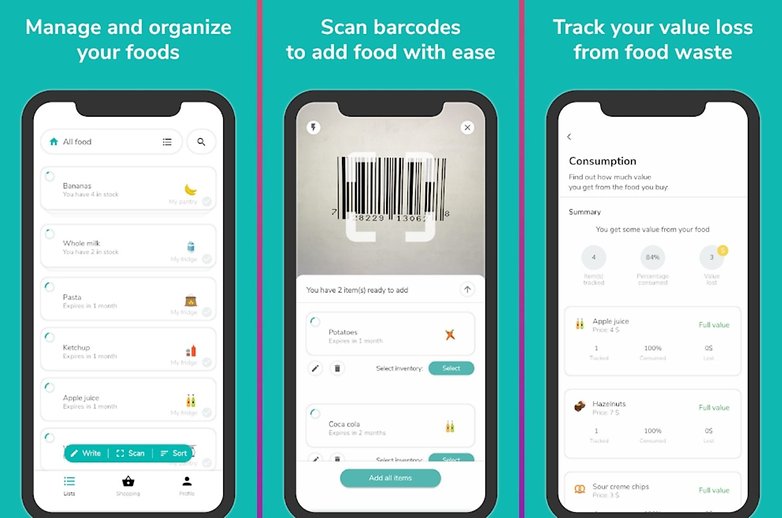Autonomous cars have been something of a theory for several years. Movies portray them as futuristic inventions that seem intangible and far away. However, you might not have to wait so long to experience a self-driving car. Robotaxis are here and ready to change the game in big ways. Here is everything you need to know about robotaxis — and the companies leading the movement.
Though the rollout of these driverless vehicles has been rocky and faced several setbacks on the way, newer startups and companies are making vast strides. Some have even moved on to late-stage testing without a human safety driver in the car.
With the widespread potential for transporting people and cargo, companies across the world are racing to perfect the autonomous car.
The Rise of Driverless Cars
A few decades ago, the idea of a car without a driver was not something that seemed plausible. Movies and TV series painted the future with high-end technology that was only something the future could concoct. Now, through countless trials and errors, the future is here and ready to bring innovation.
Driverless cars haven’t suddenly appeared — they’ve been in the works for quite some time. Artificial intelligence (AI) and machine learning algorithms are what have ultimately propelled things like robotaxis into the realm of possibility. With these tools, vehicles can detect which lane to stay in, navigate around accidents and get to a destination safely, all without a driver.
These feats are present at reduced levels currently. Tesla, for instance, allows a driver to enable autopilot mode where the car automatically drives for them. Of course, the driver must still be in the car for that setting to function, but it shows the direction that these vehicles are working towards.
Tesla CEO, Elon Musk, has been floating the idea of fully autonomous vehicles recently. Originally, Musk stated that the world would see driverless Tesla vehicles by the end of 2020. However, with the pandemic and related production and technological setbacks, Musk is now stating 2021 is more realistic. Regardless of the year, Musk’s message stands — driverless vehicles are closer than ever.
While Tesla is making strides, other companies are also competing for a breakthrough. AI has been the key to all progress thus far and will only improve from here. Companies like Waymo and AutoX are using machine learning to keep the innovation going.
While 2020 didn’t see widespread adoption of autonomous cars, it did see ones that made it to critical stages of testing.
Where Progress is Happening
Around the world, countries are seeing various developments in autonomous vehicles.
Specifically, the United States and China are working on late-stage testing that shows promising signs. Several companies, including Waymo, AutoX, Zoox, Nuro and Cruise, have moved past the human driving stage into fully autonomous testing. Waymo and AutoX currently stand out.
Waymo
The biggest news from 2020 for self-driving cars is from Waymo. Alphabet, the conglomerate parent company that brings you Google, is perfecting its venture into autonomous vehicles. As of October 2020, Waymo has fully operational vehicles driving through the suburbs of Phoenix, Arizona (blogdotwaymodotcom).
Moreover, these vehicles have the capacity to transport individuals. Though the operation is still on a smaller scale, this move from Waymo is big. Passengers must sign a nondisclosure agreement (NDA) before getting inside but can sit back and enjoy the ride as the car takes them to their destinations.
Navigating through traffic, around accidents and around turns in the suburbs, Waymo expects the self-driving robotaxis to only gain popularity from here. Expanding beyond, urban areas and longer distances will be a new focus that could take this company to the next level.
For now, customers can climb aboard and experience one of the first public adoptions of a fully autonomous vehicle.
AutoX
On the other side of the world, China is making similar strides. With support from the online marketplace, Alibaba, AutoX is a newer startup that’s progressed through testing stages efficiently. On the streets of Shenzhen in China, residents can see brand-new autonomous cars driving around with ease.
Though not fully available to the public yet, the company is working on one of the last stages of testing. So far, the driverless vehicles have been operating smoothly without a backup human safety driver in the car. This step is a good sign of progress and eventually implementation in China and elsewhere.
Like all autonomous vehicles, AutoX’s cars use AI to get around. They have an innovative XCU control unit which the company states has powerful computing and sensing capabilities. These features help the cars react faster, brake quickly, and switch lanes and navigate through traffic when they need to.
How Autonomous Vehicles Can Change Things
Waymo and AutoX show just how fast autonomous vehicles can progress. With the right technology and testing, these vehicles are unstoppable, and the industry is already moving quickly. Due to the coronavirus pandemic, delivery services have taken off like never before since people are staying home more often than not.
People across the world are also trying to avoid spreading the virus and coming in contact with others. With driverless vehicles, both ridesharing and delivery sectors could change for the better. More businesses could start to integrate driverless vehicles for delivery and taxiing individuals around cities and rural areas.
Since companies like Uber and Lyft are already massive, adding self-driving cars to the mix would only bring these industries to a more innovative level. Moreover, with companies like Amazon implementing drones and fast-delivery services, other companies will need ways to compete in the commerce world.
Technology is what will ultimately change the game and make autonomous vehicles more common. Without that tech, these cars would be unable to drive by themselves. With fine-tuning and collaboration, though, an autonomous car can automatically park, avoid collisions and reduce traffic by taking optimal routes and eliminating human error altogether.
On their current trajectory, autonomous vehicles are set to become the next big thing in the automotive industry. At its core, AI is what will revolutionize vehicles for the better. Yet, these kinds of cars are only just starting out — manufacturers still have a few obstacles ahead of them.
What Comes Next
A few questions and concerns remain. Primarily, the public will no doubt want to ensure that these cars are safe and secure. Not having a driver in the car and solely relying on a vehicle to do all the work will surely be a reason to be wary for some.
However, it’s critical to note that a study reported that 94% of the accidents it focused on were the product of human error. Moreover, distracted driving accidents make up 25% of all car accidents in general. With statistics like these showing the true dangers of human driving, autonomous vehicles could end up preventing accidents and keeping more people safe.
Nailing down safety features and protocols in these vehicles will be the next major step. Though some, like Waymo, have already rolled out self-driving cars to passengers, it will always be critical to monitor and adjust safety throughout the months and years ahead — just as companies do for regular cars.
Alongside safety, companies need to ensure these vehicles are accessible. With various designs and interiors, wheelchair accessibility will be key to focus on. Since autonomy is a big, progressive step for vehicles, manufacturers should make sure this step includes everyone.
Finally, focusing on sustainability will also be critical. With some companies testing driverless cars in places like California, the conversation opens up around electric vehicles and ones that run on gas. California, for instance, has enacted a plan to phase out fossil-fuel-based cars by 2035. With other states likely to follow suit, autonomous vehicle manufacturers should focus on the future of sustainable cars instead of the past.
The Road Ahead
With the progress of companies like AutoX and Waymo, the future is clear. Autonomous cars are set to become the norm. Exactly when is the only unclear part. The pandemic has changed the trajectory of many industries, but it seems these vehicles are holding strong.
Still, the pandemic influences how people interact with the world around them. Focusing on contactless rides and deliveries alongside safety, accessibility and sustainability are what will ultimately catapult self-driving cars into the spotlight. The work of automotive startups and corporations is evident in the present. The road ahead holds many more surprises.
Image Credit: andrew ruiz; unsplash






